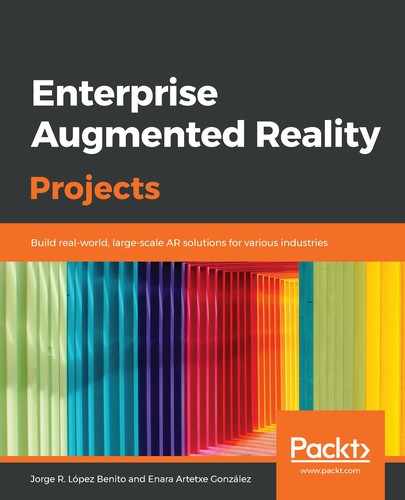The first time you open the Unity editor, you will see a layout with different bars and windows, similar to what can be seen in the following screenshot:

At first glance, the Unity configuration slightly reminds us of 3D modeling tools, with the 3D scene in the middle, although it has more panels on the sides than modeling tools does. Although it can look a bit daunting to understand everything if you are not familiarized with 3D tools, the Unity interface is quite straightforward and has remained very much the same throughout the Unity versions. The main components that can be seen in the preceding screenshot are as follows (from top left to bottom right):
- The Toolbar: Here, we have the main buttons so that we can manipulate objects in the Scene view to test the scene.
- The Hierarchy window: The Hierarchy window shows the elements in the Scene view ordered hierarchically.
- The Scene view, Game view, and Asset Store window: These three tabs have different purposes. The Scene view shows all the elements in the 3D scene. The Game view shows, from the camera perspective, how the scene will look when built. The Asset Store window can be used to download packages and assets from the Unity Store so that we can include them in our project.
- The Inspector window: When an element is selected in the Hierarchy window or the Scene view, its features and components will appear in this window.
- The Project window and Console window: The former shows all the directories and files of the project that we can (or not) use in the scene, while the latter shows the log messages.
Now, we're going to explore each component in detail and learn how to change this layout to our needs and tastes.
